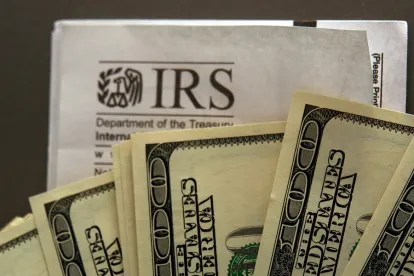In September of last year, the Internal Revenue Service (IRS) issued proposed regulations under Section 851 of the Internal Revenue Code (the “Code”) providing guidance on the use of controlled foreign corporations by regulated investment companies (RICs) to invest in commodities. If finalized in their present form, the regulations will reverse the position previously expressed by the IRS in a number of private letter rulings (PLRs). All of those PLRs were issued before June 2011, when the IRS announced it was re-examining the issue and would suspend the issuance of any more such PLRs. The proposed regulations are the outgrowth of that re-examination.
Generally, income earned on commodities transactions is not qualifying income for RIC purposes, so that RICs wishing to invest in commodities have had to devise special ways to do so. A number of RICs that have wanted to provide an exposure to commodities have established wholly owned foreign subsidiaries to invest in commodities. Those subsidiaries are controlled foreign corporations (CFCs), and income earned by the subsidiary is therefore includable in the taxable income of the RIC each year under Section 951 of the Code. In the PLRs issued before June 2011, the IRS previously ruled repeatedly that the income included under Section 951 is “qualifying” income for a RIC even if the amount is not actually distributed each year by the CFC to the RIC. The proposed regulations will reverse that position and provide that only income actually distributed by the CFC in the same year as it is earned will be qualifying income.
Under the new regulations, CFCs owned by RICs will have to pay out their income to the RIC each year if any inclusions under Section 951 are to constitute qualifying income. This means that amounts not so distributed but otherwise includible in the RIC’s income, along with any other nonqualifying income recognized by the RIC, cannot amount to more than 10 percent of the RIC’s income for the year if the RIC is to meet the 90 percent qualifying income test for maintaining RIC status.
The IRS is also proposing parallel treatment of annual income inclusions from passive foreign investment companies (PFICs) for which a shareholder makes a “qualified electing fund” (QEF) election. Those annual inclusions, which are similar to the annual inclusions from CFCs, will not be qualifying income for RIC purposes unless actually distributed each year. This will tend to force RICs to make the generally less desirable “mark-to-market” election under Section 1296 of the Code with respect to any PFIC stock that the RICs acquire, rather than a QEF election, inasmuch as amounts included in income under such a mark-to-market election will continue to be qualifying income for RIC purposes.
The new regulations are to be effective for RIC taxable years beginning on or after the 90th day after the date the regulations are issued in final form. So RICs that are currently using CFCs to invest in commodities have time to adjust to the requirement for annual distributions before it comes into effect. It should be noted that in a year in which, for some reason, the RIC does not want to have to have the CFC distribute cash to meet the annual distribution requirement of the new regulations, the same result may be achievable in many instances by having the CFC simply distribute a promissory note.




 />i
/>i

